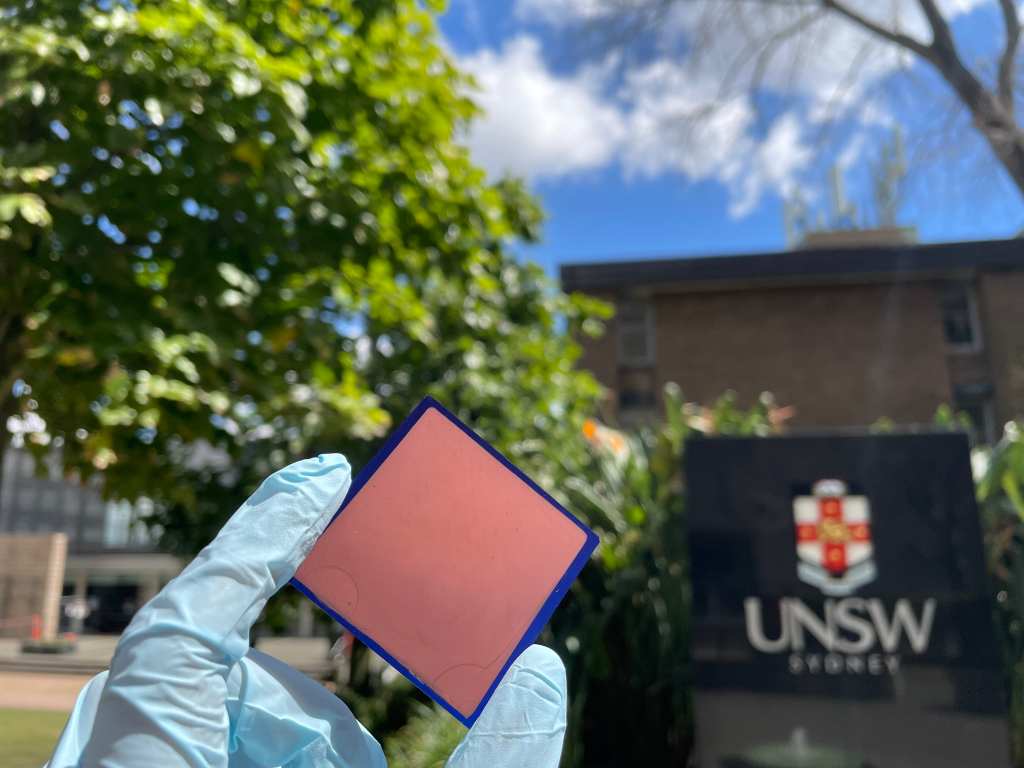The world needs more ammonia but with fewer emissions. Australian inventors have found a way to make it using pure sunlight.
This story featured in Issue 13 of Forbes Australia. Tap here to secure your copy.

Ammonia production is one of the toughest challenges for a decarbonising world. Without ammonia, we would not have nitrogen fertilisers. Without nitrogen fertilisers (which help plants grow and multiply crop yields), half the global population could go hungry, according to Nature.
“We need man-made fertilisers in order to feed crops,” says Professor Rose Amal, a chemical engineer at the University of NSW. “The reason we have the population we have, over seven billion, is thanks to the fertilisers that give us the crops to eat.”
The problem is ammonia production is massively energy-intensive and emissions-intensive. According to the International Energy Agency, global ammonia production devours around two per cent of the world’s total energy needs. It spews 450 million tonnes of Carbon Dioxide (Mt CO2) in direct emissions yearly – more than Australia’s national greenhouse gas emissions across all sectors. It spawns another 170 Mt CO2 of indirect emissions each year, thanks to the electricity it needs and the chemical reactions created when fertilisers mix with soil.
“That’s huge,” says Amal. “We all want to meet the Net Zero target. We want to reduce the CO2 that we emit. We need to find a new process. “You cannot just use electricity to replace ammonium. So, this is one of the hard-to-abate industries.”
Professor Amal is part of a multidisciplinary team of researchers at the University of NSW that has discovered a way to produce ammonia using nothing but wastewater and sunlight. Their research was recently published in the Journal of Energy and Environmental Science.
“The process of making ammonia is a multilevel issue,” Amal says.
First, it is a chemical compound made of nitrogen and hydrogen. While nitrogen is relatively easy to find (it makes up nearly 80% of the earth’s atmosphere), hydrogen is buried deep underground. Humans excavate and extract it from fossil fuels. “We need to replace that,” says Amal.
Second, the process of producing ammonia itself requires a chemical reaction that only happens in extreme heat – around 400 to 500 degrees Celsius. Burning fossil fuels is the only way to reach temperatures that high. “The original thought was, let’s look at how we can produce ammonia at ambient conditions,” says Amal. “A way to produce ammonia that doesn’t require the high temperatures.”
The School of Chemical Engineering collaborated with the School of Photovoltaics and Renewable Energy Engineering to develop a world-first technology – a solar panel, but instead of making electricity, it makes ammonium ions.

“We collaborated with experts in solar cells,” says Amal. “They know the materials, and usually, they use them to harness the sun’s energy and convert that energy to electricity. “We’re using the solar panel, but instead of making electricity, we’re making the ammonium ion.”
The process is called photoelectrocatalytics. It combines photocatalysis (the use of light) with electrochemistry (the use of an electrical current to drive a chemical reaction on a surface). The ‘artificial leaf’ is a special nanostructured (that is, very tiny) layer of copper and cobalt hydroxide on a traditional silicon solar panel. By combining sunlight with wastewater that contains nitrate, the panel catalyses the chemical reaction needed to produce ammonium nitrate.

“In a real leaf, photosynthesis is how plants use sunlight, water, and carbon dioxide to create oxygen and energy in the form of sugar,” UNSW says. “In this new photoelectrocatalytic process, the solar panel acts like an artificial leaf to use sunlight and nitrate-containing wastewater to create ammonium nitrate.”
“A lot of wastewater will have nitrate,” Amal says. “The ammonium can come from wastewater or even runoff.”
Amal believes this circular use of wastewater is an additional benefit of the technology, as well as the transport and security advantages of moving chemical production closer to where it is needed. “I see the future of making ammonia chemical is making it closer to where we need it,” she says. “Just imagine you have to transport ammonium powder from overseas. All the transport costs and emissions due to the transport and shipping – all those things can be cut down.”
However, while this research might be groundbreaking, its next test is scaling. The photoelectrode solar panel that sat on the roof of the Tyree Energy Technologies building at UNSW was 40cm2. It produced enough ammonium to fertilise less than 1.5m2 of cropland.
Meanwhile, the world uses 132 million tonnes of ammonia for fertiliser production each year. By 2050, population growth and changing diets will drive that to 165 million tonnes. “Scaling it up needs collaboration with people with the skills to scale,” says Amal. “At the university, we are working on the research and trying to find the right conditions to produce it. Scaling up will be a different challenge. But we think that’s feasible. “We need industries to work together to see how we can scale up this process.”
Look back on the week that was with hand-picked articles from Australia and around the world. Sign up to the Forbes Australia newsletter here or become a member here.



